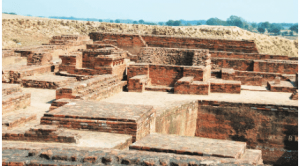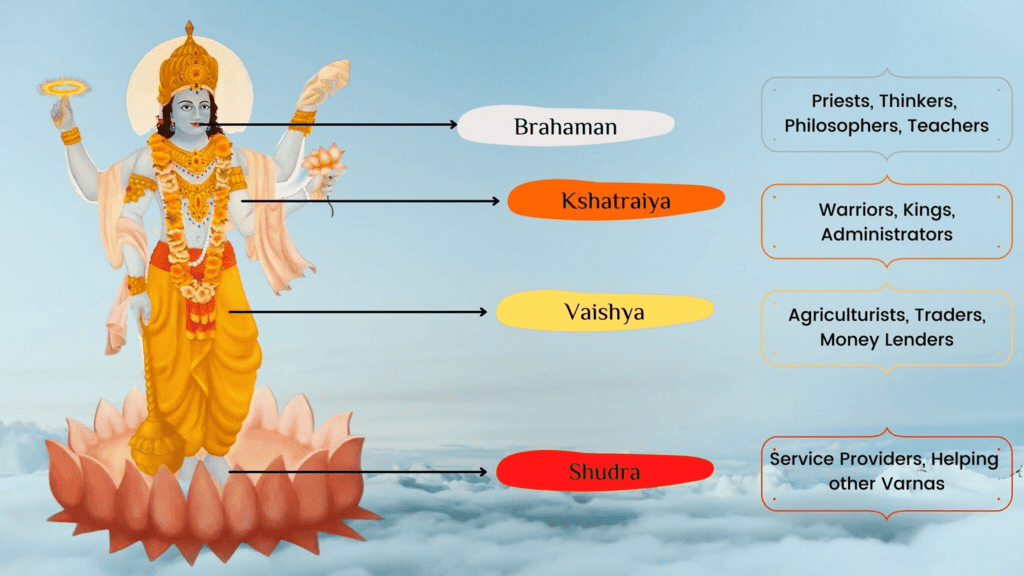SAQ for Chapter 4 New Beginnings: Cities and States Class 7 Social Science NCERT
Important Questions1
Q1: How did the Second Urbanisation differ from the rural life after the Harappan period?
Answer
After the Harappan cities declined, people lived in small villages for about 1000 years. The Second Urbanisation brought the growth of new cities, trade, and political systems in the Ganga plains and beyond.
SAQ
2
Q2: What do archaeological excavations tell us about janapadas and mahajanapadas?
Answer
Excavations reveal city layouts, fortifications, coins, and tools that help us understand life in these ancient settlements. These findings match details from ancient texts.
Ruins of complex at Kaushambhi
SAQ
3
Q3: Why were cities like Rajagriha and Kauśhāmbī fortified?
Answer
These capitals were fortified with moats and narrow gateways to protect against attacks. Fortification showed the need for safety in growing urban centers.
SAQ
4
Q4: How did trade routes contribute to the rise of cities during this time?
Answer
Trade routes connected regions, allowing the movement of goods, people, and ideas. This helped cities grow into major centers of commerce and culture.
SAQ
5
Q5: Describe the role of the council in early janapadas.
Answer
The sabhā or samiti advised the raja and helped make decisions. In some cases, they even had the power to replace an unfit ruler.
SAQ
6
Q6: What were the key duties of a raja in a monarchy?
Answer
A raja collected taxes, built forts, kept an army, and maintained law and order. His position was usually passed down to his son.
SAQ
7
Q7: How were ganas or sanghas different from monarchies?
Answer
In ganas or sanghas, decisions were made by discussion or voting, not by one ruler. This was an early form of collective leadership.
SAQ
8
Q8: How did iron tools improve farming?
Answer
Iron tools were sharper and stronger than earlier tools, allowing farmers to clear more land. This made large-scale farming easier and more productive.
SAQ
9
Q9: How did early coins help in trade?
Answer
Punch-marked coins made of silver helped standardize trade. They made buying and selling easier across different regions.
SAQ
10
Q10: How was the varna system organized in Vedic society?
Answer
The varna system divided people into four groups based on their roles: priests, warriors, traders, and workers. These roles were passed down in families.
Varna System
SAQ
11
Q11: What kind of work did people in different jātis do?
Answer
Each jāti had a traditional occupation, such as farming, pottery, or metalwork. These jobs were passed down and shaped their social identity.
SAQ
12
Q12: How did southern kingdoms like the Cholas, Cheras, and Pandyas develop?
Answer
These kingdoms grew in south India through trade and agriculture. Ancient Tamil literature records their rulers and rich culture.
SAQ
13
Q13: What were mahajanapadas and why were they important?
Answer
Mahajanapadas were large states formed from janapadas. They marked India’s Second Urbanisation with cities, trade, and governance.
SAQ
14
Q14: What was the role of sabhā and samiti in governance?
Answer
They were councils of elders who advised or even elected rulers, especially in ganas and sanghas with democratic traditions.
SAQ
15
Q15: How did iron tools impact agriculture?
Answer
Iron tools were stronger and sharper, making farming more efficient and supporting larger food production.
SAQ
16
Q16: Describe the social structure based on varnas.
Answer
Vedic society had four varnas – Brahmins (priests), Kshatriyas (warriors), Vaishyas (traders), and Shudras (workers).
SAQ
17
Q17: What was Dakshinapatha and why was it significant?
Answer
It was a major route from central to south India, helping trade, military, and cultural exchange.
SAQ